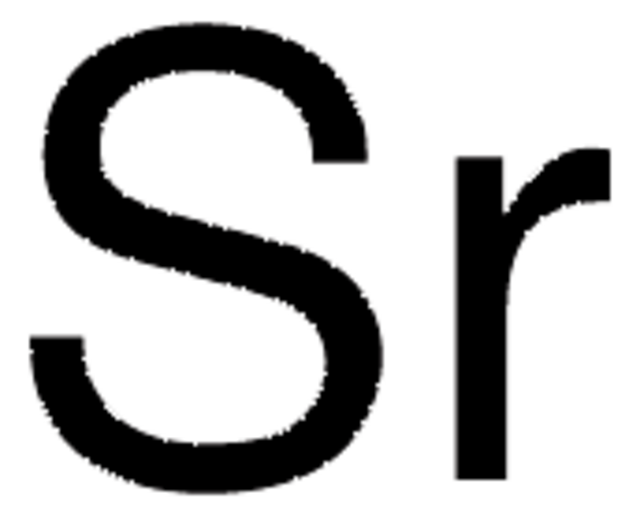441872
Calcium
dendritic pieces, purified by distillation, 99.99% trace metals basis
Sinonimo/i:
Atomic calcium, Calcium element
About This Item
Saggio
99.99% trace metals basis
Forma fisica
dendritic pieces
Purificato mediante
distillation
Impiego in reazioni chimiche
reagent type: reductant
Resistività
3.5 μΩ-cm, 20°C
P. eboll.
1484 °C (lit.)
Punto di fusione
850 °C (lit.)
Densità
1.54 g/mL at 25 °C (lit.)
Stringa SMILE
[Ca]
InChI
1S/Ca
OYPRJOBELJOOCE-UHFFFAOYSA-N
Cerchi prodotti simili? Visita Guida al confronto tra prodotti
Descrizione generale
Applicazioni
- Process control agent in mechanical alloying of titanium to get maximum powder yield and microstructural stability.
- A precursor to synthesize Ca8Al3 and Ca13Al14 with metallic Zintl phases and Ca6.2Mg3.8Sn with an unprecedented type of tin chain composed of square-planar tin units.
- A catalyst in the highly selective oxidation of phenols.
Accessorio
Avvertenze
Danger
Indicazioni di pericolo
Consigli di prudenza
Classi di pericolo
Water-react 2
Codice della classe di stoccaggio
4.3 - Hazardous materials which set free flammable gases upon contact with water
Classe di pericolosità dell'acqua (WGK)
WGK 1
Punto d’infiammabilità (°F)
Not applicable
Punto d’infiammabilità (°C)
Not applicable
Dispositivi di protezione individuale
Eyeshields, Gloves, type P3 (EN 143) respirator cartridges
Certificati d'analisi (COA)
Cerca il Certificati d'analisi (COA) digitando il numero di lotto/batch corrispondente. I numeri di lotto o di batch sono stampati sull'etichetta dei prodotti dopo la parola ‘Lotto’ o ‘Batch’.
Possiedi già questo prodotto?
I documenti relativi ai prodotti acquistati recentemente sono disponibili nell’Archivio dei documenti.
I clienti hanno visto anche
Il team dei nostri ricercatori vanta grande esperienza in tutte le aree della ricerca quali Life Science, scienza dei materiali, sintesi chimica, cromatografia, discipline analitiche, ecc..
Contatta l'Assistenza Tecnica.





